Utah has a lot of deserts, as well as highlands and mountains where there is not a lot of rainfall.
It is the second dryest state in the nation, but it still has its share of wildlife.
There are several reptiles and amphibians in these dry areas, such as Gila monsters and a large variety of lizards.
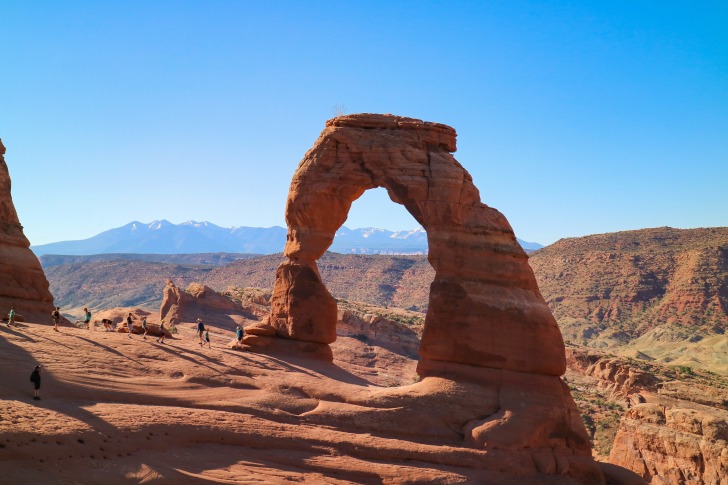
Contents
So… Are There Alligators in Utah?
The short answer is, there should not be any alligators in Utah.
Alligators like swampy areas that are hot and wet.
There are no areas like that in Utah, which is mostly desert and arid land.
There are a few rivers, but virtually no swampy areas that an alligator would like.
Alligators can survive in places where they should not live, but it would be very hard for one to survive in an area like Utah.
Over the past 20 years or so a few alligators have been found, and wildlife officials believe these are animals that people have abandoned once they got too big.
In 2017 there was a report of an alligator at Utah lake but it was never confirmed.
There have been a few found in the Jordan River, and they were believed to have been abandoned there.
Utah Lake is about 50 miles north of the Great Salt Lake, and the Jordan River connects them.
In 2016 an alligator nesting area and a couple of alligators were found at Lake Powell in the southern part of the state.
There have been a few more reports over the years, but probably less than a dozen in the last 25 years.
Is it Safe to Swim in Utah?
Utah has a lot of safe swimming areas, and you can be certain you will not come across an alligator while swimming there.
The Great Salt Lake is an interesting experience for swimmers because of the level of salt.
You can float there in the water easily, but the heavy saltwater has some drawbacks that make swimming difficult.
The water is not very deep, and salt gets on everything.
There are several freshwater lakes and rivers where you can swim in Utah, but you may have to go looking for them.
The water is usually cold coming out of the mountains.
There is more danger from cold water and boating accidents than there is from wildlife while swimming in Utah.
Pineview Reservoir near Ogden is one of the most popular places to swim in Utah.
Calf Creek Falls in the Escalante National Monument is a great natural place to swim and even has waterfalls.
Interesting Alligator Facts in Utah
The Bear Lake Monster is a legend that is at least 100 years old and concerns this small lake on the Utah-Idaho border.
It is about 125 miles north of Salt Lake City.
The Bear Lake Monster is like a snake but has legs and a big head, which sounds sort of vaguely like an alligator.
Locals have given it the name “Isabella.”
Many people claim to have seen the monster, and there are some pictures that claim to show the monster, but none are clear.
There are hot springs at the lake, which keep the water warm enough for an alligator to survive.
Alligators can live 60-plus years, and get very big, so it is possible.
Wildlife officials have never confirmed the existence of Isabella, and officials say it is an unconfirmed sighting.
While it may be a myth, Bear Lake is popular with tourists, and stories about the monster of the lake are one reason they come here.
Lake Powell is another place where alligators have been spotted, and an alligator nest was found there a few years ago.
There are no hot springs there, but alligators can survive in some pretty harsh environments.
In cold weather, alligators go into a brumation state, which is similar to hibernation.
They don’t move much at all, don’t eat, and their body functions slow down a lot.
If the water around them did not freeze it is possible one could survive, wildlife officials, say.
Alligators are either American Alligators or Chinese Alligators, and those are the only two species.
There are several species of crocodile that can be found around the world in equatorial areas.
The southern tip of Florida is the only place in the world where alligators and crocodiles live together naturally.
A zookeeper was injured by an alligator in 2021 in Salt Lake City when she was feeding the animals.
She was injured and hospitalized but survived the incident.
Both Crocodiles and alligators are considered ancient animals, close relatives of dinosaurs.
Fossils of creatures that were ancestors of alligators and crocodiles have been found in various places in Utah.
One ancient creature walked on two legs.
The alligator was once an endangered species. In the 1960s, alligators were considered endangered due to overhunting.
Conservation efforts stabilized their population and it has grown a lot since then.
In the late 1980s, the alligator was taken off the endangered species list.
In some areas, there are too many now, and controlled hunts are allowed.
Alligators do not like saltwater, but they still live mostly in coastal areas of the United States, from North Carolina to Texas.
They have moved inland to some degree along rivers.
Rivers and lakes are their preferred habitat.
They are moving further inland over time, but it is extremely unlikely that they will ever get as far inland as Utah.
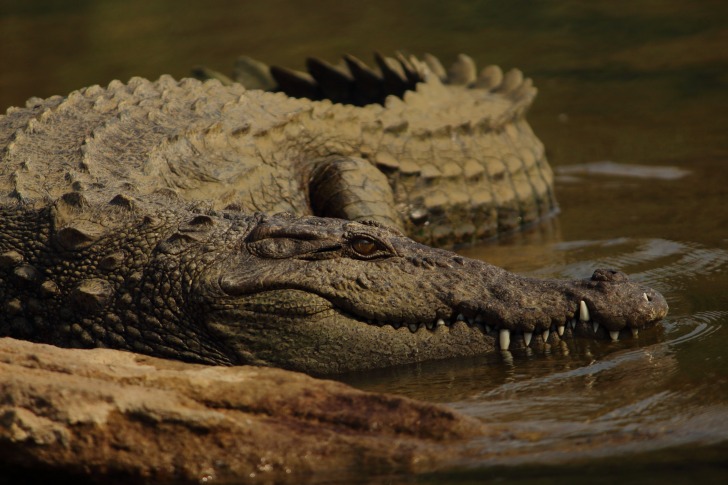
Alligators vs. Crocodiles
All alligators are part of the crocodile family.
There are only two species of alligator, one in America and one in China.
There are several species of crocodile.
The few that have been spotted in Utah were alligators, and there have been no reported sightings of crocodiles.
Here are the differences:
- Alligators have a broader, u-shaped snout, and crocodiles have a more v-shaped snout. Because of this, crocodile teeth are visible when the mouth is closed, and they are not visible when an alligator closes its mouth.
- Alligators have about 80 teeth, and Crocodiles may have more than 100. When teeth break or are worn down, they grow new ones. Both creatures will go through thousands of teeth over their lifetime.
- Crocodiles have the strongest bite of any living creature, at about 3700 pounds per square inch. Alligators are no slouch, coming in at 2500 PSI. A human bite is between 120 and 600 psi.
- Alligators are gray with a creme underbelly. Crocodiles are olive or tan, with a lighter underbelly.
- Crocodiles can live in salt water, while alligators can survive only a short time in salt water.
- Alligators have webbed feet, while crocodiles do not. This makes alligators better swimmers.
- Alligators can get up to 30 miles per hour, while a crocodile can only go about 20. They can go this fast only for a short distance, however.
- Alligators are smaller, at about 10 feet and 1,000 pounds, while crocodiles can get up to 20 feet and 2000 pounds. Crocodiles are also more aggressive in nature.
3 Safety Tips for Swiming in Alligator-infested Waters
- Don’t swim with alligators. It is unlikely you will ever see an alligator in the water in Utah, but if you do, get out of the water. Wildlife officials say you should stay at least 50 feet away from an alligator, and avoid being in the same water they are in. They can run fast, but only for a short distance. Alligators lying in the sun on the banks of rivers are usually not dangerous as long as you don’t aggravate them.
- Don’t feed alligators. This is good advice even in Utah. It is not a good idea to feed wild animals of any kind. Processed food humans eat is not good for them and could even kill them. Apart from that, they begin to associate people with food, which will make them aggressive toward other humans. Keep in mind that any food scraps you leave behind, or if you leave pieces of fish you have cleaned, you are in essence feeding wildlife.
- Don’t swim alone or at night. It is easy to get in trouble when you are in the water, and if you do, you may need someone to help you. Lakes and rivers can have dangerous undertows that can pull you under the water or further downstream than you want to go. At night is when animals are looking for food and you are more likely to come in contact with them. There are things you cannot see in the water at night, and there could be hazards that could injure you.
Summary
Utah is not the kind of place where an alligator would live comfortably.
It is too dry and cold.
Even so, there have been rare sightings, and it is possible that one could survive in Utah.
Utah Safety Overview
READ THE FULL REPORT: Utah Safety Review
Safety Index:
- OVERALL RISK: LOW
- TRANSPORT & TAXIS RISK: LOW
- PICKPOCKETS RISK: LOW
- NATURAL DISASTERS RISK: MEDIUM
- MUGGING RISK: LOW
- TERRORISM RISK: LOW
- SCAMS RISK: MEDIUM
- WOMEN TRAVELERS RISK: LOW
Frequently Asked Questions
How many injuries or deaths happen in the water in Utah?
The only injury ever reported due to an alligator was at a zoo in 2021.
Between 30 and 44 people die in boating or swimming accidents in Utah each year.
There could be a lot of factors, but Utah has an average of 16 deaths per 1,000 registered boats, which is triple the national average and the fourth worst in the nation.
Could an alligator survive in Utah?
It is possible in theory at least.
There is one lake that has hot springs that could keep the water warm enough for an alligator to survive the winter.
There are some other areas where the water does not freeze completely, and an alligator could theoretically survive, according to wildlife officials.
The environment in most of the state is the opposite of what an alligator needs to flourish.
Is it a bad idea to have an alligator as a pet?
Yes, it is a bad idea, and in Utah it is illegal.
Only zoos may own alligators in Utah.
Alligators may be cute when they are small, but they get bit.
They will not stop growing and can live for 50 or more years.
Eventually, you will not be able to take care of it, and you will have to either kill it or abandon it in the wild.
Abandoning alligators in rivers is also illegal, and dangerous to other wildlife and people.
What is the most dangerous reptile in Utah?
The rattlesnake is one of the most dangerous and there are five species that live in Utah.
They are relatively common but like to stay out of sight and sleep during the day.
They normally only come out at night to look for food.
Most people who are bitten by a snake have stepped on the snake, so be careful to watch your step.
Snakebites are rarely fatal, but they can cause long-term damage to your nervous system.
The Gila Monster is also a dangerous reptile.
These are easy to see and avoid, and some people have them as pets.
Their bite is painful and venomous.
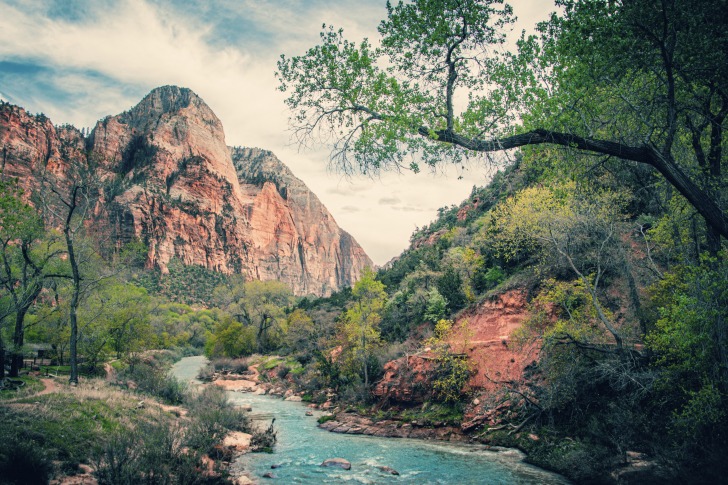


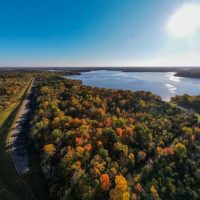


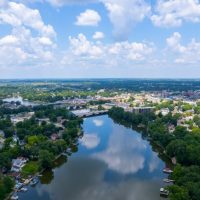





Utah’s dry and arid environment makes it highly unlikely for alligators to thrive, although there have been a few rare sightings over the years.